
One of the archives I visited during the second half of my time in London was the Archive Collection at the RAF Museum. Sadly the material I turned up, though interesting, was not overall of much relevance for my thesis. So I couldn’t justify spending a second day there. But, on the bright side, the archives closed at 5pm and the museum itself at 6pm — so I was able to able to use that hour to whiz through and have a look at the Fighter Hall, which I’d missed on my first visit.
Above is a Bristol Beaufighter TF.X torpedo bomber (well, the TF stands for torpedo fighter but that’s a bit of an oxymoron, isn’t it). A very versatile and heavily-armed machine, which according to the museum’s sign was called the “whispering death” by the Japanese — but Wikipedia says this is probably a propaganda legend. In front is a cannon (I assume from a Beaufighter), with a few shells in the magazine. Those things are big.

The ultimate refinement of the Spitfire, the F24, introduced in 1946. The five-bladed propeller seen here was only one of the differences from the Mk I: it also had clipped wings (for faster rolls), a tear-drop canopy (greater visibility), three times the firepower, nearly twice the rate of climb and a top speed 160 km/h higher. None of which counted for much in the jet era: only a few dozen F24s were ever built.

The rather distinctive Hawker Typhoon — just the thing for a spot of tankbusting over France.

It surely must be time for an autogyro revival! Though I suppose there wasn’t ever an autogyro era to revive. This is a Cierva C-30A autogyro, built under license by Avro (as the Type 671 Rota) for RAF evaluation in 1935. They were initially evaluated for the army co-operation role but ended up being used during to calibrate the first radars.

A Tornado: about three weeks later I saw another of these, a bit further away but a lot louder.

The beautifully-polished rear fuselage (and unfortunately only the fuselage remains) of a Southampton I flying boat. These entered production in 1925 and were made by Supermarine, which for most of its life was a flying boat specialist — despite being largely remembered today for just one land-based interceptor. (See above.)

The Beaufort torpedo bomber, which was descended from the Blenheim bomber and from which the Beaufighter was derived in its turn.
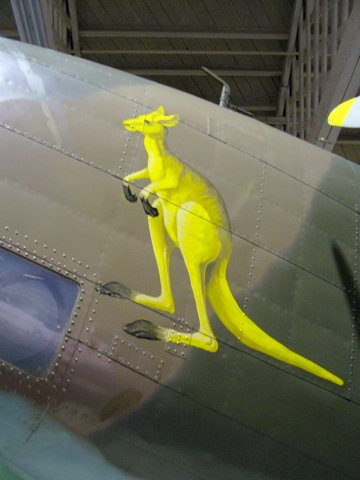
Nose art from a Hudson IIIA of the RAAF (surprisingly enough). Of course the paint job isn’t original (between 1954 and 1966 it looked like this), but presumably there’s evidence that this aircraft (or one like it) had something like this during the war.

Another Supermarine flying boat, the Stranraer: the last of the RAF’s biplane flying boats.
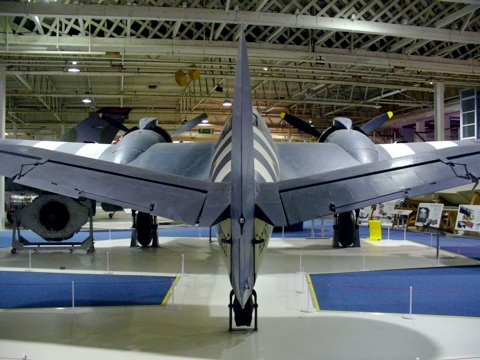
A different view of the same Beaufighter at the top of the post. Note the post-D-Day invasion stripes.

This one obviously has a story behind it! It’s a Gladiator II which served with 263 Squadron. In April 1940 it was ferried to Norway on the aircraft carrier HMS Glorious, to a base on a frozen lake. But it was very soon damaged in a German air raid and abandoned by the RAF when the base was evacuated. When the ice melted, it sank through and settled on the bottom. In 1968 a RAF diving team located the wreckage, and in 1970 another team salvaged it.
263 Squadron re-equipped with more Gladiators and returned to Norway where it had more success (26 claims from 249 sorties). But it was evacuated again, once more on the Glorious. Unfortunately the Glorious was intercepted by the Scharnhorst and the Gneisenau and sunk. 263 Squadron lost 10 pilots, including its CO.
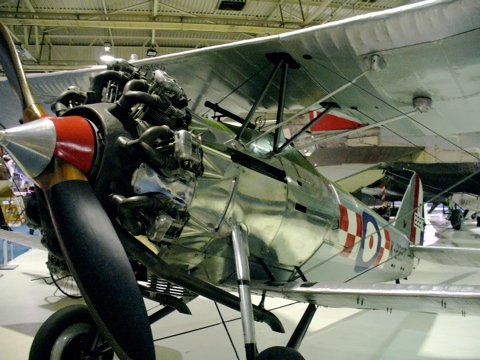
Yet another Bristol aeroplane, the Bulldog: one of the classic British interwar fighters. Fast and highly maneuverable, but not recommended for extremely low-level rolls.

The bombload of a DH9A (well, most of it), the RAF’s standard air control bomber. This particular aircraft was presented by His Highness the Nizam of Hyderabad.
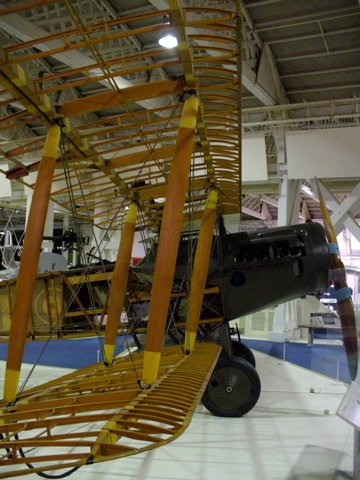
The Brisfit (Bristol F2B Fighter), which first saw combat in 1917. Like the Defiant two decades later, it’s a two-seat fighter with a rear gunner. Unlike the Defiant, it had a disastrous combat debut (4 out of 6 were lost on their first patrol), but then went on to a brilliant career, since it was as maneuverable as the enemy single-seat scouts. This example is devoid of canvas on one side, in order to show the internal construction.
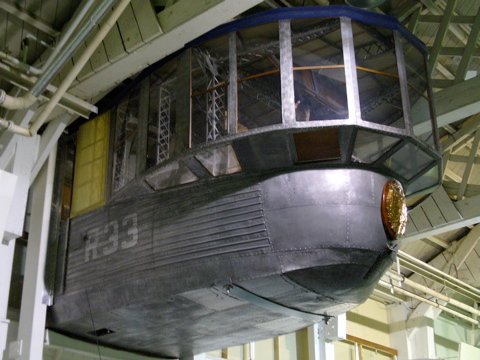
This is the third airship car (or part thereof) I saw in London; it’s nice to know that something survived. This one is from the R33, one of the most successful of the large British rigid airships. (Quite possibly because it was based upon the design of a captured Zeppelin!) It was certainly fortunate: in 1925, it was blown away from its mooring mast in a gale — bursting the forward gas cell in the process — and forced out over the North Sea. It had only a skeleton crew on board, who turned R33 into the teeth of the gale and attempted to maintain its position, but it wasn’t until after nearly landing in the sea (and jettisoning surplus weight to prevent this) and ending up over the Dutch coast that they managed to bring the airship to a halt and start on the trip back home. It survived until 1928 when it had to be dismantled due to metal fatigue.

Lastly, the last great British interceptor — indeed, one of the great aircraft of the Cold War — the supersonic BAC Lightning.
![]() This work is licensed under a Creative Commons Attribution-NonCommercial-NoDerivatives 4.0 International License.
Permissions beyond the scope of this license may be available at http://airminded.org/copyright/.
This work is licensed under a Creative Commons Attribution-NonCommercial-NoDerivatives 4.0 International License.
Permissions beyond the scope of this license may be available at http://airminded.org/copyright/.

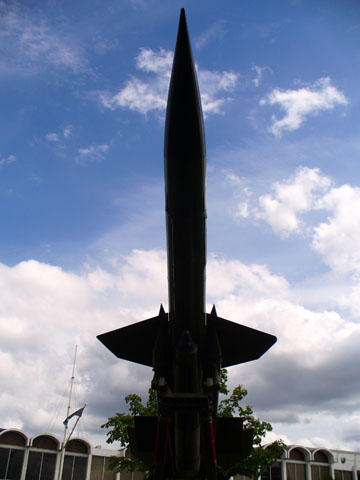
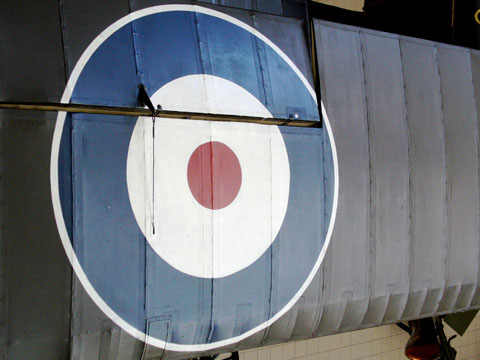
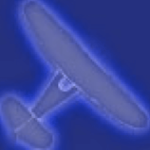
RAF Hendon exhibition in one hour? I almost feel sorry for you! Considering the speed of your walkthrough, I’m impressed of how many photos you managed to take. My presonal favourite since its restoration is the Bulldog.
Last time I was there it was with a tripod, full day, and didn’t manage to do the Battle of Britain hall properly…
Yeah, especially since these are only the best and least blurry ones. I took nearly as many in that one hour as I did in about 3 or 4 hours on my previous visit! I wanted to go back and take some more, of the Canberra I think, but there were two security guards shepherding me towards the exit so I had to give up that idea …
For reasons I’ve never quite been able to work out, the Beaufighter has always seemed to me to be the most aesthetically pleasing of all the RAF’s WWII aircraft.
The Beaufighter was indeed a fighter; 4x 20mm cannon and 6x .303 machine guns. It was originally developed as a night fighter with radar, and was the first really effective one the RAF fielded. Coastal Command operated them in mixed strike wings; one squadron would carry torpedoes, another bombs, and a third rockets and cannon to suppress the flak and go after any fighters.
Yes. I didn’t mean that the Beaufighter wasn’t a fighter, more that a fighter with an 18″ torpedo slung underneath isn’t going to be much of a fighter …
I need to get me back to Hendon sharpish…
I note that the Typhoon is the only one left, the other 3299-odd having been scrapped as the Tempest replaced the Tiffys. It was in the Smithsonian’s collection, but they swapped it for (IIRC) a Hurricane.
I didn’t know it was the last one! I think the Smithsonian got dudded on that deal, though …
I think they knew that, but very sportingly thought that the last Tiffy should be in the UK. A Hurricane IID might have been a better swap, but I don’t know whether there are any of those left either…
The Beaufighter put me in mind of this poem, which is sort of a poor man’s “The Death of the Ball Turret Gunner”:
“When a Beau Goes In” , by Gavin Ewart
When a Beau goes in,
Into the drink,
It makes you think,
Because, you see, they always sink
But nobody says “Poor lad”
Or goes about looking sad
Because, you see, it’s war,
It’s the unalterable law,
Although it’s perfectly certain
The pilot’s gone for Burton
And the observer too
It’s nothing to do with you
And if they both should go
To a land where falls no rain nor hail
nor driven snow –
Here, there, or anywhere,
Do you suppose to care?
You shouldn’t cry
Or say a prayer or sigh.
In the cold sea, in the dark
It isn’t a lark
But it isn’t original sin –
It’s just a Beau going in.
Thanks, Mark, I hadn’t come across this before.
i think the weapon infront of the beaufighter is a molins gun
http://www.quarry.nildram.co.uk/Molins.htm
Thanks, looks like you’re right. In that case it seems it would have come from a Mosquito (‘Tsetse’).
That Gavin Ewart piece is fantastic!
I’m fond of Ewart’s poem myself; it isn’t anthologized nearly as much as the Jarrell, probably because Jarrell was a professional poet and critic, while Ewart was better known for songs and light verse, but Paul Fussell used it as a specific example of how different WWII poetry was from that of WWI; “The Death Of The Ball Turret Gunner” is much more in the older style. I can’t agree with the crack about “When A Beau Goes In” being a poor man’s anything, though; you might as well describe it as “Ball Turret Gunner” with the sap rinsed off. Here’s how it’s usually given:
When a Beau goes in,
Into the drink,
It makes you think,
Because, you see, they always sink
But nobody says “Poor lad”
Or goes about looking sad
Because, you see, it’s war,
It’s the unalterable law.
Although it’s perfectly certain
The pilot’s gone for a Burton
And the observer too
It’s nothing to do with you
And if they both should go
To a land where falls no rain nor hail nor driven snow —
Here, there, or anywhere,
Do you suppose they care?
You shouldn’t cry
Or say a prayer or sigh.
In the cold sea, in the dark
It isn’t a lark
But it isn’t Original Sin —
It’s just a Beau going in.
The version Paul Fussell quotes has the “they” in the last line of the second stanza italicized.
Spockahontas:
I don’t know, do you really think ‘The Death of the Ball Turret Gunner’ is sappy? ‘When I died they washed me out of the turret with a hose’ seems to me quite grotesque and more forceful than anything in ‘When a Beau Goes In’. Anyway, you might be interested in another post I wrote, a review of Daniel Swift’s Bomber County, where I talk a bit about Jarrell (though not, alas, Ewart).